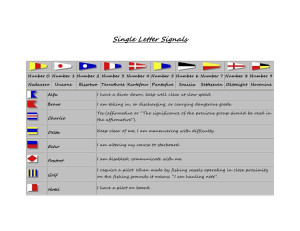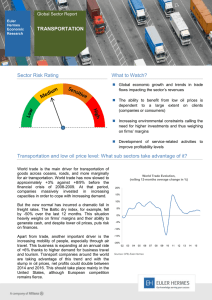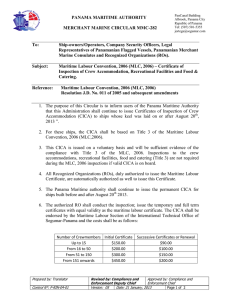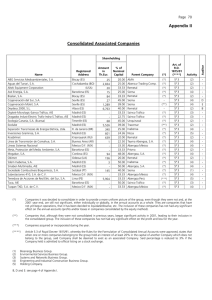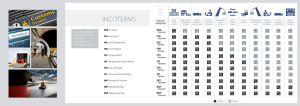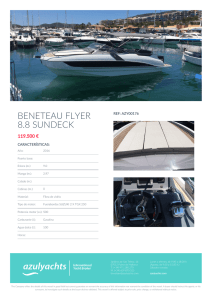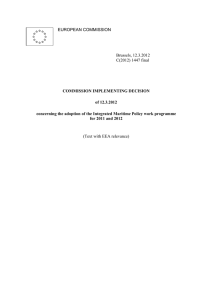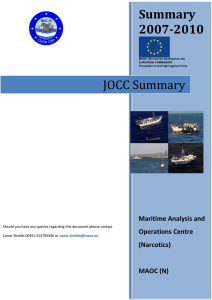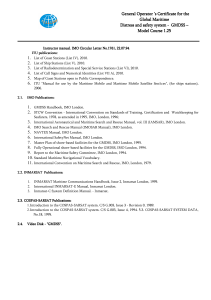The Changing Role of Vessel Traffic Services
Anuncio
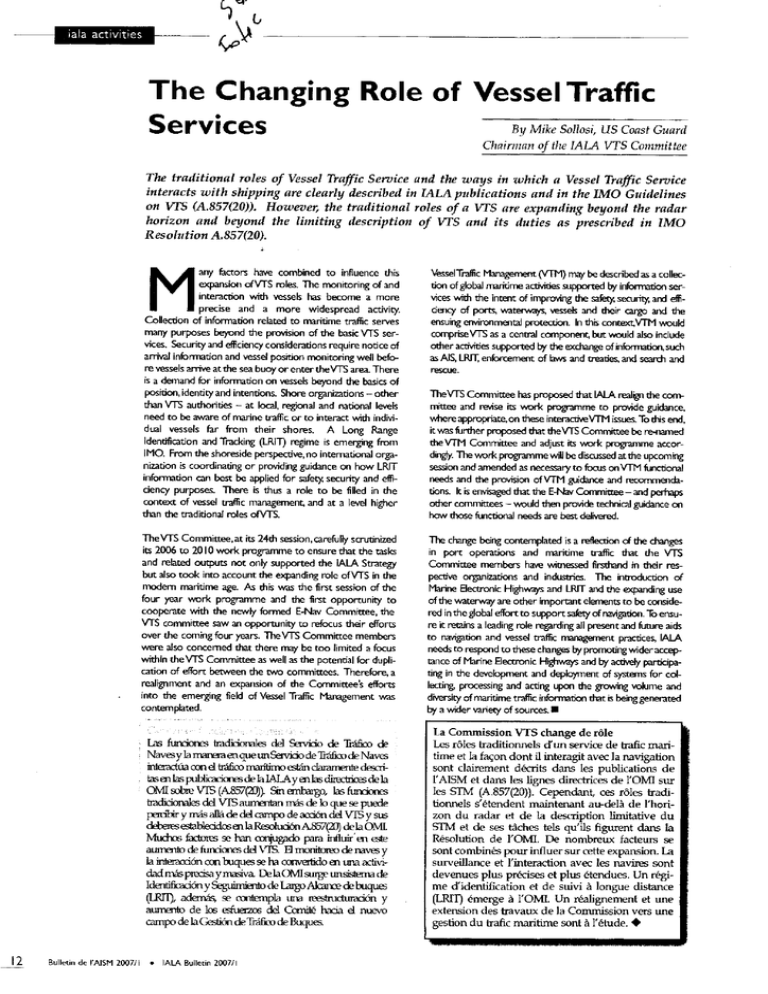
eg sv 6 \(‘ ,149 The Changing Role of Vessel Traffic By Mike Sollosi, LIS Coast Guard Services Chairman of the IALA VTS Committee The traditional roles of Vessel Traffic Service and the ways in which a Vessel Traffic Service interacts with shipping are clearly described in IALA publications and in the IMO Guidelines on VTS (A.857(20)). However, the traditional roles of a VTS are expanding beyond the radar horizon and beyond the limiting description of VTS and its duties as prescribed in IMO Resolution A.857(20). M any factors have combined to influence Chis expansion ofVTS roles. The monitoring of and interaction with vessels has become a more precise and a more widespread activity. Collection of information related to maritime traffic serves many purposes beyond the provision of the basic VIS services. Security and efficiency considerations require notice of arrival information and vessel position monitoring well before vessels arrive at the sea buoy or enter theVTS arca. There is a demand for information on vessels beyond the basics of position, identity and intentions. Shore organizations — other than VTS authorities — at local, regional and national levels need to be aware of marine traffic or to interact with individual vessels far from their shores. A Long Range ldentification and Tracking (LRIT) regime is emerging from IMO. From the shoreside perspective, no international organization is coordinating or providing guidance on how LRIT information can best be applied for safety, security and efficiency purposes. There is thus a role to be filled in the context of vessel traffic management, and at a level higher than the traditional roles ofVTS. TheVTS Committee has proposed that IALA realign the committee and revise its work programme to provide guidance, where appropriate, on diese interactiveVTM issues. To this end, it was further proponed that theVTS Committee be re-named the VTLI Committee and adjust its work programme accordingly. The work programme will be discussed at the upcoming session and amended as necessary to focus onVTM functional needs and the provision of VTM guidance and recommendations. k is envisaged that the E-Nav Committee — and per haps other committees — would then provide technical guidance on how those functional needs are best delivered. TheVTS Committee, at its 24th session, carefully scrutinized its 2006 to 2010 work programme to ensure that the tasks and related outputs not only supported the IALA Strategy but also took into account the expanding role ofVTS in the modem maritime age. As Chis was the first session of the four year work programme and the first opportunity to cooperate with the newly formed E-Nav Committee, the VT5 committee saw an opportunity ro refocus their efforts over the coming four years. TheVTS Committee members were also concemed that diere may be roo limited a focus within theVTS Committee as well as the potential for duplication of effort between the two committees. Therefore, a realignment and an expansion of the Committee's efforts into the emerging field of Vessel Traffic Management was contemplated. The change being contemplated is a rellection of the changes in port operations and maritime traffic that the VTS Committee members have witnessed firsthand in their respective organizations and industries. The introduction of Marine Electronic Highways and LRIT and the expanding use of the waterway are other important elements to be considered in the global effort to support safety of navigation. To ensure it remins a leading role mgarding all present and barre aids to navigation and vessel traffic management practices, IALA needs to respond to [hese changes by promoting wider acceptante of Marine Electronic Highways and by acrively participating in the development and deployment of systems for collecting, processing and acting upan the growing volume and diversity of maritime traffic information that is being generated by a wider variety of sources. Las funcionEs tradicionales del Sevicio de Tráfico de Naves y la manera en que unServicio de Tráfico de Naves interactua con el tráfico marítimo están claramente desaílas antas publicaciones de la IALA y en las directrices de la OMI sobre VIS (A857(20)). Sin embargo, las funciones tradicionales del VIS aumentan más de lo que se puede Les roles fraditionnels d'un service de trafic maritime et la facon dont il interagit avec la navigation sont clairement décrits dans les publications de rmsm et dans les lignes directrices de l'OMI sur les STM (A.857(20)). Cependant, ces roles traditionnels s'étendent maintenant au-delá de l'horizon du radar et de la description limitative du STM et de ses táches tels qu'ils figurent dans la Résolution de I'OMI. De nombreux facteurs se sont combines pour influer sur cette expansion. La surveillance et l'interaction avec les navires sont devenues plus precises et plus étendues. Un régime d'identification et de suivi á longue distance (LRIT) émerge á l'OMI. Un réalignement et une extension des travaux de la Corrmússion vers une gestion du trafic maritime sont á l'étude. • VesselTraffic Management (VTM) may be described as a collection of global maritime activkies supported by information services widi the intent of improving the safety, security, and efficiency of ports, waterways, vessels and their cargo and the ensuing environmental protection. In Chis context,VTM would compriseVTS as a central component, but would also include other activities supported by the exchange of information, such as AIS, LRfI enforr_ement of laws and treaties, and searth and rescue. ■ La Commission VIS change de role percibir y más allá de del campo de ación del VIS y sus deberes establecidos en la Resolución A.&57(20) dela OM1 Moches factores se han conjugado para influir eyi. este aumento de funciones del VIS. Ei monitoreo de naves y la interacción con buques se ha convertido en una actividad más precisa y masiva De la OMI surge un sistema de Idendficadon y Seguimiento de Largo Alcance de buques (LRIT), además se contempla una reestructuración y aumento de los esfuerzos del Cornil hada el nuevo campo de la Gestión de Tráfico de Buques. 12 Bulletin de l'AISM 2007/1 • IALA Bulletin 2007/1
